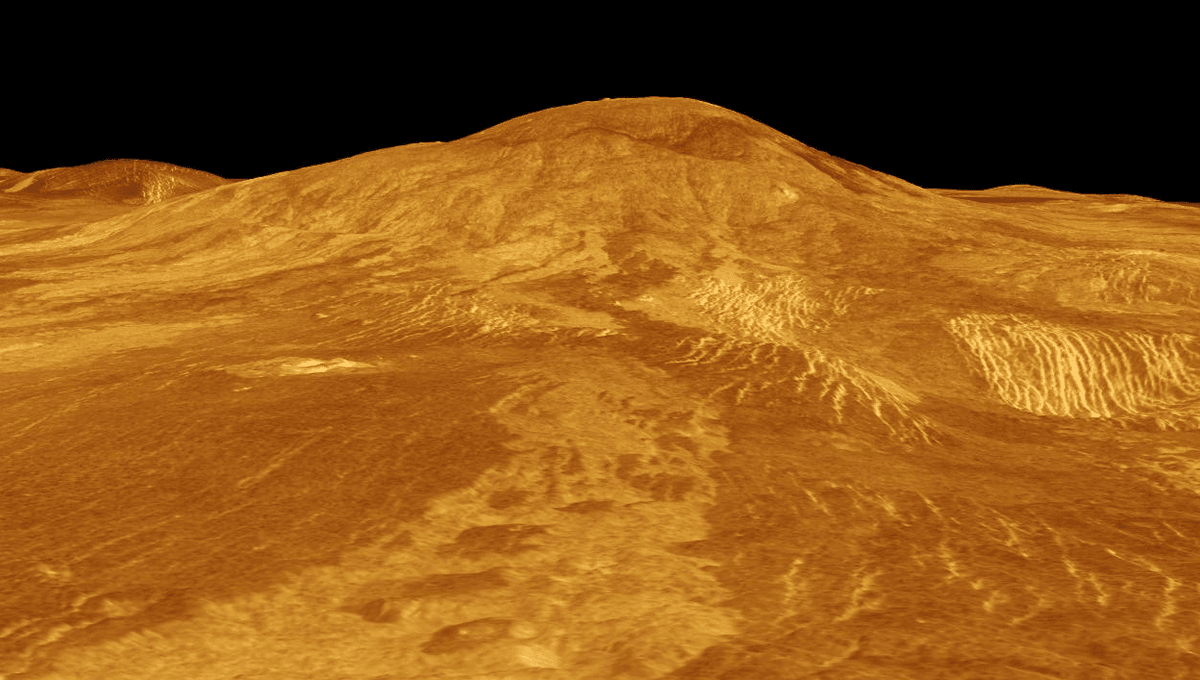
Two lava flows on Venus show signs of being very recent, suggesting volcanic activity on Earth’s evil twin may be ongoing, providing exciting opportunities for future study.
It’s hard to believe today, but in the middle of the last century, hopes for life or future colonies on Venus were as high as for those on Mars. We soon learned that the planet was dead biologically (some recent debate about the upper atmosphere aside), and the same was thought to be true geologically, since it lacked plate tectonics. Attention turned elsewhere.
Now, however, Venus is having a bit of a resurgence. The latest step involves planetary scientists spotting changes at two locations between images taken in 1990 and 1992 that might be signs of fresh lava flows.
Last year, data from the Magellan orbiter taken back in the 1990s was found to show changes around a suspected volcanic vent between two radar mapping cycles. The team that spotted it thinks lava escaped in between. Shortly afterwards a map of 85,000 Venusian volcanoes was published. Although most of these are almost certainly extinct, it is hoped the map could be used to spot any that might still be active.
The plan seems to have worked. Dr Davide Sulcanese of Università d’Annunzio and co-authors searched through the Magellan images to look for changes. The process is not as easy as it might sound, because the orbiter was not in identical positions when areas were mapped on the two passes, so variations in angles make places look different.
However, after weeding out a variety of false changes, the team consider changes on the western flank of the volcano Sif Mons, and in western Niobe Planitia, to be the real thing. “We suggest that these changes are most reasonably explained as evidence of new lava flows related to volcanic activities that took place during the Magellan spacecraft’s mapping mission,” they write.
The authors chose Magellan’s first and third mapping cycles, because the viewing angles are more similar to each other than either is to cycle 2. The maps the team used have a pixel size of 75 meters, so any activity needs to be substantial to be detected.
“Our results show that Venus may be far more volcanically active than previously thought,” Sulcanese said in a statement.
Neither of the changes observed can be conclusively identified as lava flows at this resolution, but the team rejected all the alternative explanations they could think of, such as atmospheric effects or landslides. Moreover, going from a single event that might have other explanations to three means that if something else is responsible, it must be quite widespread, rather than a fluke event.
The three locations are so dispersed across Venus they can’t be connected; if all are real, we can expect eruptions to be a frequent event.
Sif Mons is a broad shield volcano where about 30 square kilometers (12 square miles) appear to have changed between passes; “Brighter regions observed in cycle 3 appear to completely cover some of the darker flows seen in cycle 1,” the authors report.
Nibie Planitia is almost 100 degrees of longitude away from Sif Mons, and the terrain is flat, making landslides unlikely. Fan-shaped features appear there in the third cycle that cannot be seen in either of the other two.
In both cases, the new bright areas appear to deviate around topographical obstacles, just as lava would.
Without knowing the depth of lava, little precision about the volume released is possible. Nevertheless, the team estimated rates of flow just from these sites similar to the annual average on Earth over the last 180 million years. “Therefore, following these calculations, not only might Venus be far more volcanically active than previously assumed, but its volcanic activity could also be of the same order of magnitude as that estimated for Earth,” they write.
Given the absence of Venusian plate tectonics – the primary driver of volcanism on Earth – that would be a remarkable finding, and one geologists would be keen to investigate. It certainly looks like there will be something worth investigating for future missions. Already, Dr Suzanne Smrekar of JPL has indicated the VERITAS mission may focus on these sites when it reaches Venus.
The study is published open access in the journal Nature Astronomy.
Source Link: Volcanoes On Venus Might Still Be Erupting In Widely Spread Locations